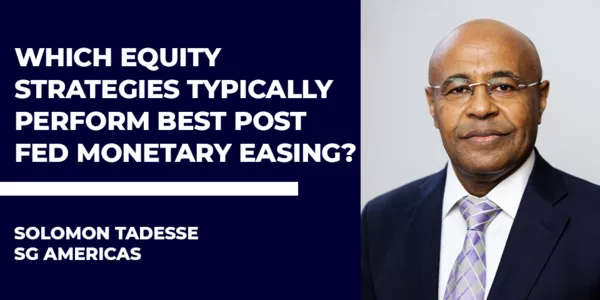
Learning Machine Learning
Neeraj Hegde, a human and quantitative trading architect at Societe Generale in New York took a few minutes to talk about Artificial Intelligence, explain how technologists are using it to augment securities trading …and to let us know if we should expect robots to replace traders any time soon.
 Artificial Intelligence is a term thrown around a lot these days. To get us on sound footing, can you define Artificial Intelligence and Machine Learning in the context of banking and securities trading?
Artificial Intelligence is a term thrown around a lot these days. To get us on sound footing, can you define Artificial Intelligence and Machine Learning in the context of banking and securities trading?
All the semantics are a bit confusing at first. Machine learning (ML) is a subfield of artificial intelligence (AI). Its goal is to enable computers to learn on their own. A machine’s learning algorithm enables it to identify patterns in observed data and build models that predict events without being explicitly programmed with rules.
Within machine learning there are three subfields: Unsupervised, Supervised and Reinforcement learning. Within each of these subfields there are two major techniques: “statistical learning” and “deep learning”.
Statistical learning uses probability and statistical algorithms to program models without rules. Deep learning uses multi-layered neural networks in addition to probability and statistical models to create more autonomous models.
How successful have banks been in using Machine Learning to help with securities trading?
Traditional statistical learning methods - statistics and supervised learning - are now standard in banks and have been for a few decades.
Outside of finance, there have been tremendous advances in the last five years from the large tech players such as Google and Microsoft. These companies have scaled up machine learning tools and democratized the technologies by building frameworks that can be leveraged across a variety of use cases. These advances, including techniques such as unsupervised & reinforcement learning and the most powerful technique, autonomous deep learning are at a nascent stage in terms of adoption in finance.
So, you could say the basic tools, statistical algorithms, have improved over the years making them more efficient; but we expect that deep learning techniques developed by the big tech companies will eventually take machine learning applications at finance companies to the next level.
Will there be a point when the machines can do it all? And, if so, how do we control them?
When you look at deep learning models, you cannot understand it from a perspective of trying to know what the model is thinking when it generates its output. Given that limitation, we need to address risk from a more holistic perspective, perhaps like a parent would manage the behavior of a child. We may not be able to control every thought in a child, but we can develop a framework to define good behavior, measurement of actions taken, and ways to reduce the impact of misbehavior.
In the algorithmic trading space, we have regulators installing guard rails on model-driven trading, and as a firm we enforce specific model risk management principles and compliance frameworks. Regardless of the level of sophistication of statistical and deep learning, model risk management principles consistent with regulatory expectations and industry leading practices will establish a safe environment for innovation.
Other than trading algorithms, how are banks using AI?
Banks are deploying machine learning to build more efficient data driven organizations. The application is not just restricted to finding patterns in markets and risk management, but across the board. For example, a field of AI – Natural Language Processing (NLP) – has become a source of hugely exciting innovation in recent years, and one which is heavily reliant on machine learning.
NLP facilitates how banks use machine learning in Know Your Customer (“KYC”) and a variety of other compliance functions. Even routine back-office reporting and cross-checking of trade bookings are being made more efficient by the subfield of AI called Robotic Process Automation (RPA).
All the above techniques are in varying phases of deployment and have enabled banks to increase the productivity of their trading and compliance operations. For a variety of compliance and risk control reasons most of the technologies will augment humans and not replace them in banks.
What are the big challenges you face when developing machine learning programs for trading?
While AI can develop autonomous models, it is still a painstaking and time-consuming process to fine tune these models to get optimal performance - in industry parlance this is called hyper parameter tuning. The problem areas where AI has been successful are “static problems” where the search tree for solutions is extremely large yet finite, the rules may be complicated but well defined, and the problem landscape is expansive but unchanging.
Real world problems involving human actors are very often “dynamic problems” where the solution at each step changes subject to the interactions of multiple participants – this is called “feedback”, and when it happens in a recursive manner it leads to “feedback loops”.
To explain a feedback loop, let’s assume I have a lot of success using some machine learning strategy to predict the behavior of S&P 500 futures. Let’s also assume other participants will attempt to do the same thing resulting in the deployment of more and more powerful Machine Learning tools. These additional participants will now affect how the stock futures trade, potentially wiping out the effectiveness of my initial machine learning strategy.
So, you could say, the more profitable a strategy is, the more participants will attempt to do something similar making it harder to be successful predicting market behavior.
Eventually, though, will there be a situation where AI can profitably trade securities by predicting financial markets without any human interference?
As you may have seen in the news recently, companies such as Google’s Deep Mind have made some astounding advances in AI and its capabilities in playing strategy games such as chess and Go. Google has also rolled out neural networks for static problems like facial recognition that are significantly more capable than any of the previous approaches to such problems.
However, where markets are concerned, because of the feedback loop, the solution to predicting how markets will behave gets harder the more people look at the problem and utilize the latest deep learning techniques. Therefore, I don’t foresee some magic technology emerging that will make profitable trades sustainably. The key to great trading results is a combination of deep insights, good analytical processes, and expert economic hypotheses that can be optimized using machine learning techniques.
Disclaimer
Unless otherwise stated, any views or opinions expressed herein are solely those of Neeraj Hegde and may differ from the views and opinions of others at, or other departments or divisions of Societe Generale (“SG”) and its affiliates. This material is provided for information purposes only and is not intended as a recommendation or an offer or solicitation for the purchase or sale of any security or financial instrument. The information contained herein has been obtained from, and is based upon, sources believed to be reliable, but SG and its affiliates make no representation as to its accuracy and completeness. The views and opinions contained herein are those of the author of this material as of the date of this material and are subject to change without notice. Neither Neeraj Hegde nor SG has any obligation to update, modify or otherwise notify the recipient in the event any information contained herein, including any opinion or view, changes or becomes inaccurate.




